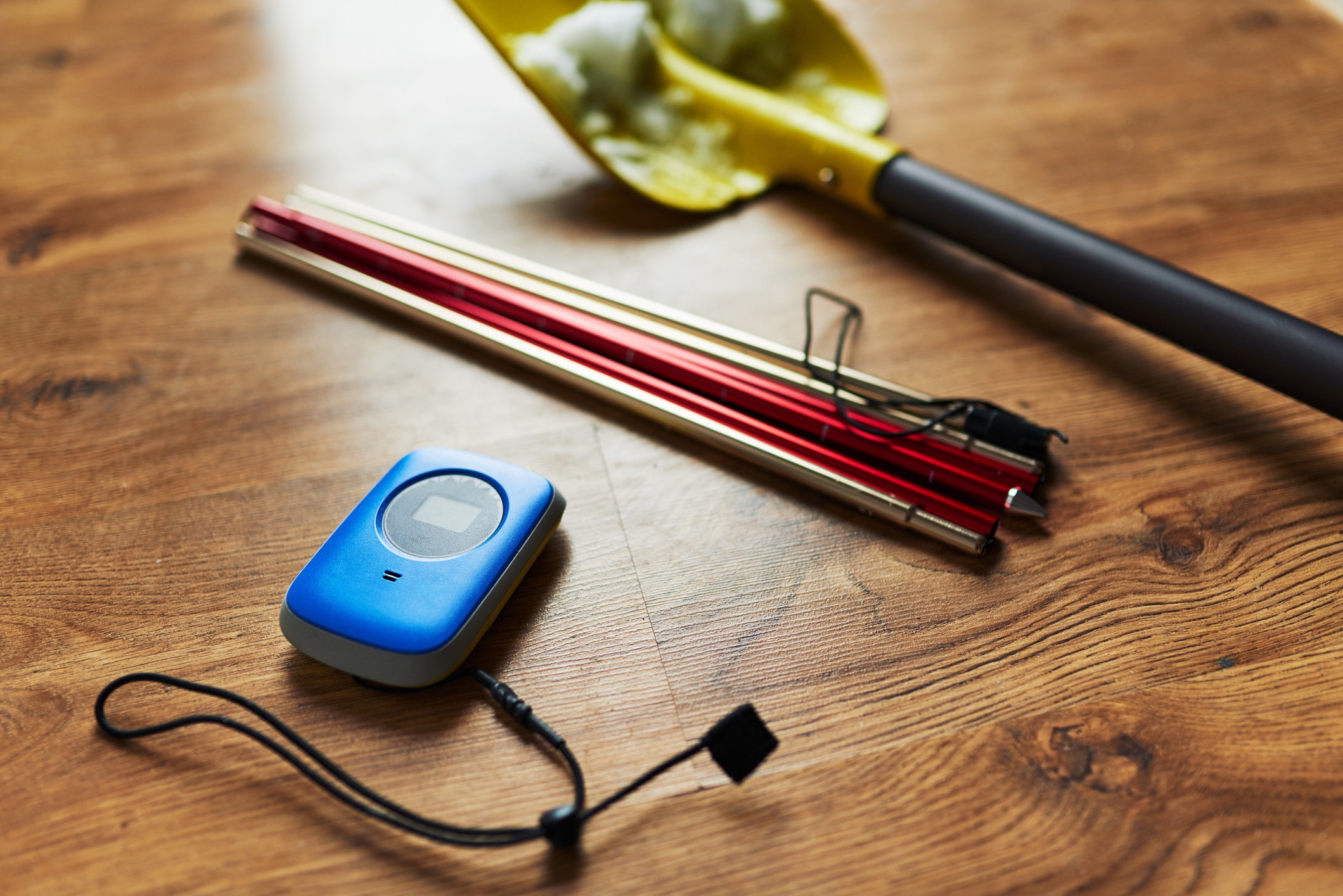

If you’re going to take your passion beyond the piste or out of bounds, you’re going to want to invest in essential FreeRide gear: Transceiver, Shovel & Probe (TSP). Think of them as your ticket to liberty. Lore #06: No TSP, No Party. Without them, you’re not only limiting your access to the good stuff, but also the people who will ride with you. Of course, we hope you never have to use them, but always carry them whenever you explore beyond the markers.
So, what exactly are we talking about? Your FreeRide Essentials are the three items that will get you or your crew out of trouble in the event of an avalanche burial. Your transceiver helps you locate buried riders or, if you’ve gone under, will enable your crew to locate you. You will be wearing your transceiver in a harness under your outermost layer or in a specially designed pocket sewn into your snow pants. Your shovel and probe are collapsible and will be in your backpack – ideally in a compartment designed for this purpose. A good backpack designed to carry and easily access your TSP is another fundamental piece of FreeRide equipment.
Backcountry riders who are avalanched have a 66% greater chance of survival if they are wearing a transceiver.
It’s important to bear in mind that avalanche is only one of the risk factors you’ll be taking on when you duck under the boundary rope or head away from the piste. Even so, it’s probably the most significant and the one over which you have the least control.
Research shows that backcountry riders who are avalanched have a 66% greater chance of survival if they (and their crew) are equipped with the FreeRide Essentials. Those are odds worth investing in, and there’s one other vital factor you must consider.
Research shows that if you’re going to Prepare To Be A Hero and keep it together in a crisis, you have to practise with your equipment regularly. Some stores and guiding companies will rent you a transceiver, but it’s not something we recommend. Partly because it’s not much use without an accompanying shovel, probe and backpack, but mainly because the best FreeRide Essentials are the ones you’re most practised with. This means you really need to own your gear and train with it frequently.

Depending on how much you want to invest, modern avalanche transceivers (or beacons) can do many useful things for you from reading the vital signs of the avalanche victim to providing you with your GPS coordinates. However, there are only two functions that are non-negotiable: they must broadcast (or transmit if you’re a techie) a radio signal (457 kHz) when in send mode and they must detect the same signal when in receive, or search, mode.
The best transceiver for you is the one you are most practised with
With so many models on the market, how will you know which is best for you? Here are a few tips to consider:
Just like transceivers, avalanche shovels come in many shapes and sizes. The limiting factor being the size of your backpack. To keep weight down it’s possible to buy a shovel with a plastic blade but if you’ve ever seen the debris field of a wet snow avalanche you know you’ll want to get a hardened and anodized aluminium one. Everything else is pretty much optional, but we think a “D” shaped handle or grip is better than a “T” shaped one when it comes to moving snow in a hurry and a telescopic shaft, while not essential, will give you more leverage when you need it. We also love a shovel with different blade positions so that it can be used like a pick to drag snow clear of the burial site. This is especially useful if you’re working as part of a rescue team or evacuating a victim from a tree bowl rather than an avalanche. A simple rule of thumb is buy the biggest shovel that will fit in your backpack and the most expensive one your budget can afford. When it comes to avalanche shovels, you really do get what you pay for.
And finally, you’ll need an avalanche probe to help you pinpoint the exact location and depth of the victim.
Probes are usually built from aluminium or carbon and come in 40 cm sections with a string or cable running through the centre that pulls them together when tensioned. There’s no standard size but we think anything under 2.5 metres is probably too short.
It’s also worth considering the lock on your probe as this is generally the point of failure. More expensive probes are likely to have fancy locking mechanisms but a simple ‘knot and notch’ will actually be just as effective and may be more durable.
Now you have your FreeRide Essentials, make sure you practise, practise, practise. Muscle memory is invaluable in a crisis. There is virtue in readiness, so suit up, and get out there! You’re ready to hit the pow.
Find out what other FreeRide gear you should carry for various adventures, from lift accessed FreeRide to multi-day tours with our handy ‘have you remembered‘ backcountry touring kit checklists, including our group safety checklist
Share your thoughts with the Republic in the comments below
Explore the themes below to find the best home for the content you want to learn about: